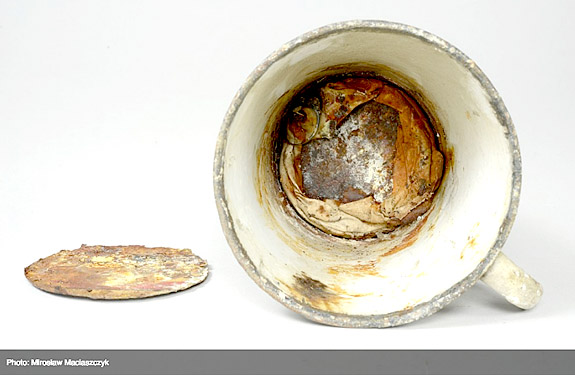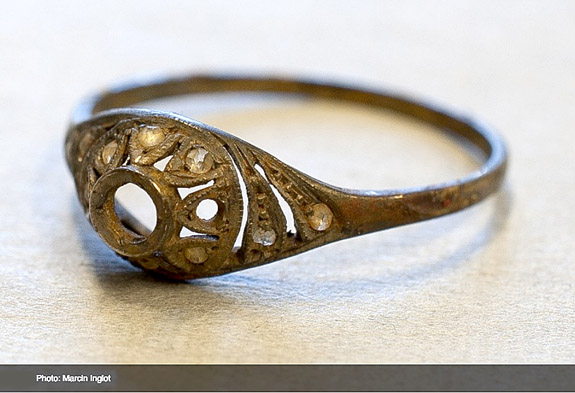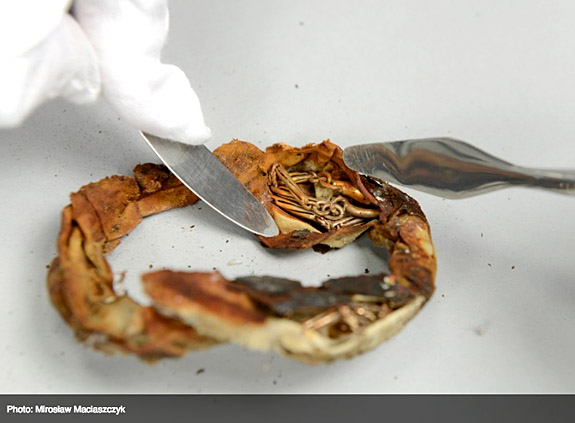Staffers of The Auschwitz Museum in southern Poland made a stunning discovery last week when an enameled mug's carefully constructed false bottom shook loose, revealing a small stash of gold jewelry.
It's been more than 70 years since the liberation of the notorious Auschwitz-Birkenau concentration camp in southern Poland, and staffers at the museum dedicated to the memory of those murdered at the camp are still uncovering fascinating secrets of how desperate families tried to preserve their valuables.
“[The jewelry] was very well hidden,” noted Hanna Kubik of the Memorial Collections. “However, due to the passage of time, the materials underwent gradual degradation, and the second bottom separated from the mug."
Under the false bottom was a women’s ring and a necklace wrapped in a piece of canvas. Both were made of 14-karat gold and fabricated in Poland between the years of 1921 and 1931.
The German Nazis of World War II routinely lied to deportees, telling them that they were being resettled in new locations and that they should take some luggage. The deportees, most of whom were Jews, were actually being transported to concentration camps for extermination. By allowing them to travel with luggage, the Nazis were certain the deportees would bring their valuables, which could be easily confiscated.
The innovative ways in which the victims hid their most valuable possessions reflects their understanding of the "robbery nature of the deportation" as well as the "ray of hope that these items would be required for their existence," stressed Auschwitz-Birkenau State Museum director Dr. Piotr M. A. Cywiński.
The Auschwitz-Birkenau concentration camp claimed an estimated 1.1 million lives during the Holocaust. While most of the victims were Jewish, the Germans also killed Poles, Gypsies, Byelorussians, Ukrainians, French, Soviets and others at the camp.
The Collections of the Memorial comprises more than 12,000-enameled kitchenware items, including cups, pots, bowls, kettles, jugs and crockery, many decorated with images of animals and children playing. The jewelry discovery occurred during routine maintenance of the collection.
Museum curators will be returning the jewelry of the false-bottom mug to its original state, reflecting the manner in which it had been hidden by its original owner.
Photos courtesy of the State Museum Auschwitz-Birkenau, auschwitz.org.



















